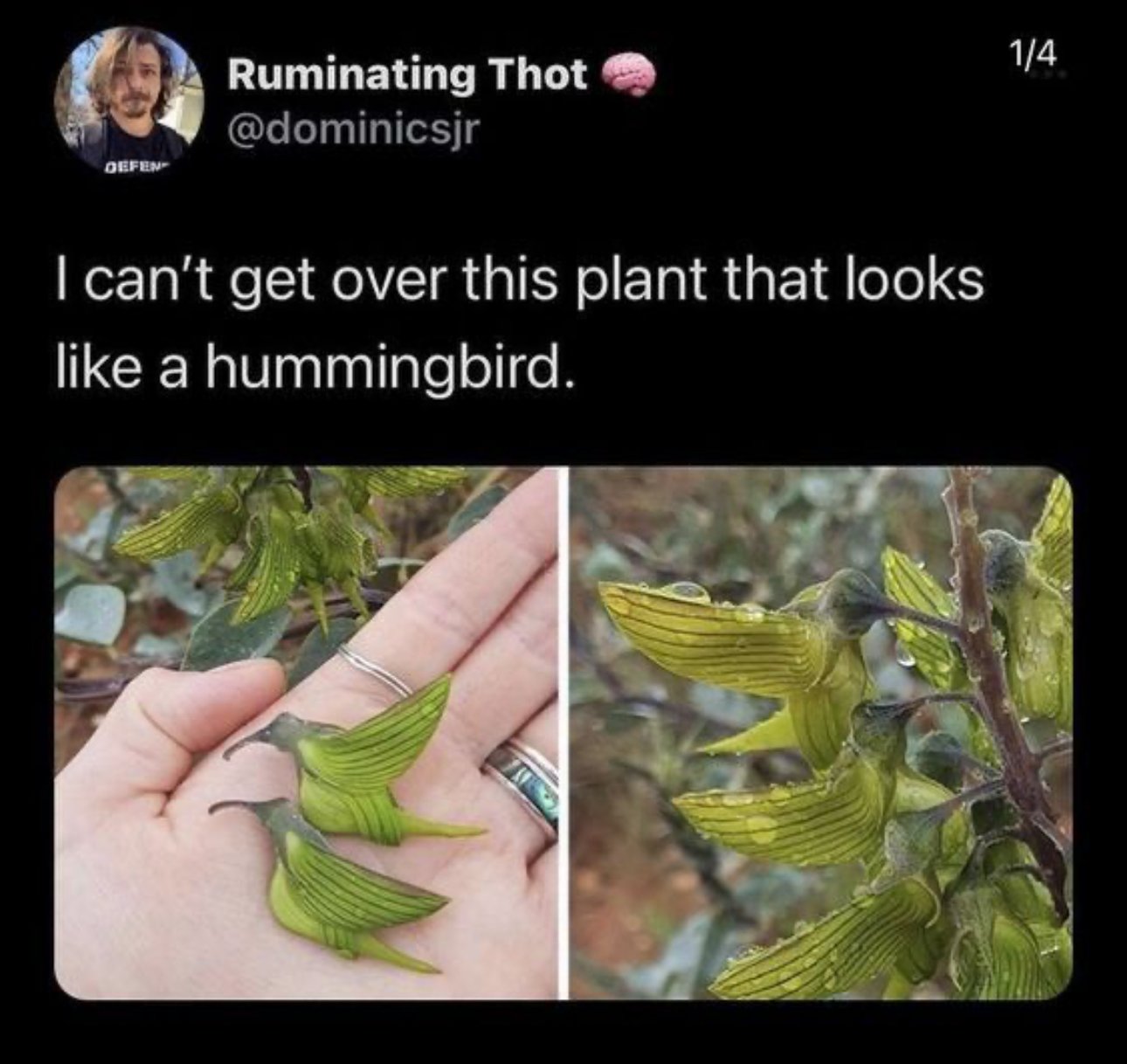this post was submitted on 07 Feb 2024
883 points (98.9% liked)
Mildly Interesting
17468 readers
116 users here now
This is for strictly mildly interesting material. If it's too interesting, it doesn't belong. If it's not interesting, it doesn't belong.
This is obviously an objective criteria, so the mods are always right. Or maybe mildly right? Ahh.. what do we know?
Just post some stuff and don't spam.
founded 1 year ago
MODERATORS
you are viewing a single comment's thread
view the rest of the comments
view the rest of the comments

Does it have to be hummingbirds? Surely there are other birds at that size
I am specifically mentioning hummingbirds, since that's the title, in the image, and the bulk of the discussion in this thread when I looked at it this morning. That being said, no, I don't think it has to be hummingbirds.
Keep in mind, these flowers are significantly smaller than most (if not all) hummingbirds, and hummingbirds themselves are amongst the smallest, if not the smallest, birds in the world. So, any species of bird that these flowers attract are going to be significantly larger than the flowers.
Not to mention that virtually all birds that feed from flowers have excellent visual acuity, that's almost a requirement for them to be successful with this feeding strategy. It seems highly unlikely that the birds would have a difficult time identifying that these are flowers and instead confusing them as a flock of miniature birds feeding from the plant. And, to me, that pretty much negates any argument for selective pressures on the flowers to have birdlike appearance for that purpose.
At least with the example of the "bee orchids" I mentioned in a prior comment, the selective pressures and the overall context make sense and appear to explain why the flowers have evolved to look like female bees and wasps. But the "hummingbird flower" from Australia that kind of resembles the profile of a hummingbird if viewed from a specific angle and out of context doesn't really hold up, in my opinion.